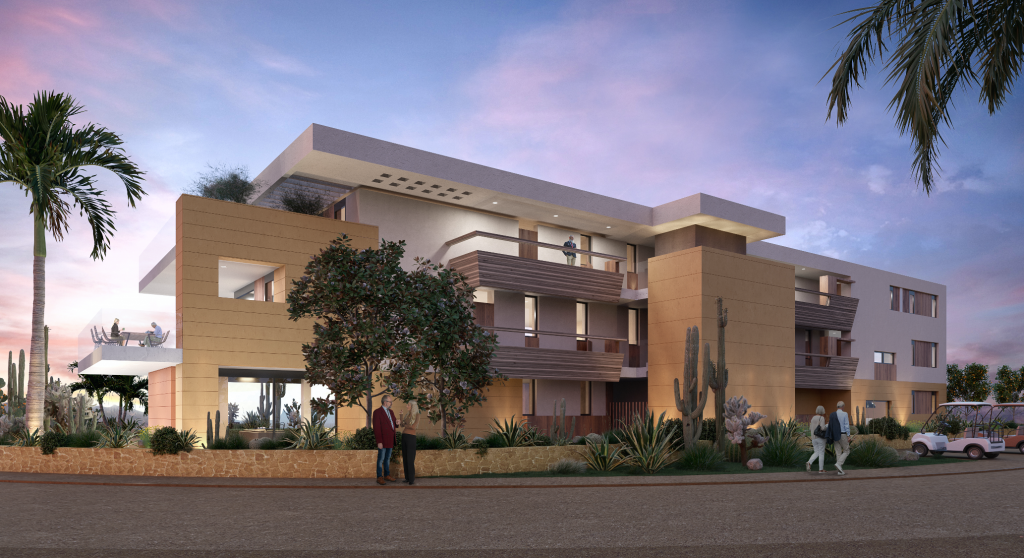
In the news, and media in general, we constantly hear about how loneliness is spreading through our society – among both young and old. Our dependence on community and social contact with other people is firmly anchored in human nature. Despite this fact, however, family structures in Europe are steadily changing, and we have almost completely moved away from large extended families living in intergenerational housing. Smaller “nuclear” families now have to stand on their own two feet.
Can we change the way we live to have a positive impact on this situation? Americans were already asking this question in the 1960s, when the “Community Living” concept first became a reality. Their answer – building private homes and communities with facilities that encourage activities and social interactions between like-minded people. This was, and continues to be, a great success, and Americans have built more 2000 projects based on this concept over the last 60 years – building strong communities through social meeting spaces.
But another question remains – do we in the North know what this concept is really about? The evidence suggests that the answer is no. Prognosesenteret published a study in February 2020 called “Boformundersøkelsen” (Housing Concepts Survey), which aimed to gain additional insights into Norwegians’ housing preferences. One of the most important findings was that only 16% of their sample of 1119 Norwegian interviewees recognised or had ever heard of the term “Community Living” (Prognosesenteret, 2020).
We should clear up one common misunderstanding immediately: “Community Living” is not about sharing rooms in your home with other people.
It is about private homes in communities where residents have access to a wide array of formal and informal social activities, and facilities such as training centres, golf courses, tennis courts, and many more things all residents can take advantage of. To better reflect this, we prefer the term “Homes with Community” – private homes and apartments in communities filled with like-minded people.
One of the most important commonalities among these communities is a focus on being able to stay active, and meet people physically – and residents respond extremely well to it. This housing concept gives people the ability to focus on the things they really enjoy, and the communities themselves both facilitate and safeguard the creation of new interests.
If residents wish, they always have the opportunity to participate in an exercise class – everything from aerobics to yoga. There are areas where residents can gather to play cards, watch movies, or paint, for example. There are cookery courses, walking/hiking groups, book clubs, and day-tripping groups, to name just a few.
Many communities also have lively social groups just for people to be able to meet their neighbours. Some of these groups may focus on eating good food together, while others may watch sporting events together.
Residents even start up and run their own activities – which is highly encouraged – so the spirit of community permeates every aspect of their lives and makes their home a better place – “Homes with Community”.

A British study run by the Associated Retirement Community Operators (ARCO) surveyed residents living in Homes with Community (specifically retirement communities) in the UK, asking, among other things, what kinds of impact their community had on their lives. They then compared their findings to quality-of-life data from residents in the community-at-large.
The study found that 54% of residents in Homes with Community participate in social activities more than they had in the past, compared to just 11% of non-residents (ARCO, 2019). The same study found that more people who choose this lifestyle ‘often enjoy life’ compared to non-residents – 70% vs. 48% (Ibid.)
Another interesting finding was that 97% of residents in Homes with Community feel that they have enough time to themselves as and when they want it (Ibid.). It is plain to see that the concept achieves a central part of its purpose – allowing residents to have as much or as little social contact as they like, entirely on their own terms.

Ambera will build self-owned properties that give people richer and simpler lives, and create projects tailored to the specific needs of different groups. Some projects will be solely for active adults, where others will be built to accommodate both active adults and families with children.
Our first project is already underway in Almeria, Spain – Ambera at Desert Springs. This will be our first Ambera Community for Active Adults in Europe. This stunning community already has a golf course, tennis courts, a fitness suite, a football pitch, swimming pools, volleyball courts, and restaurants, and it is just five minutes from the Mediterranean. We could not ask for better conditions to create a fantastic Ambera Community.
